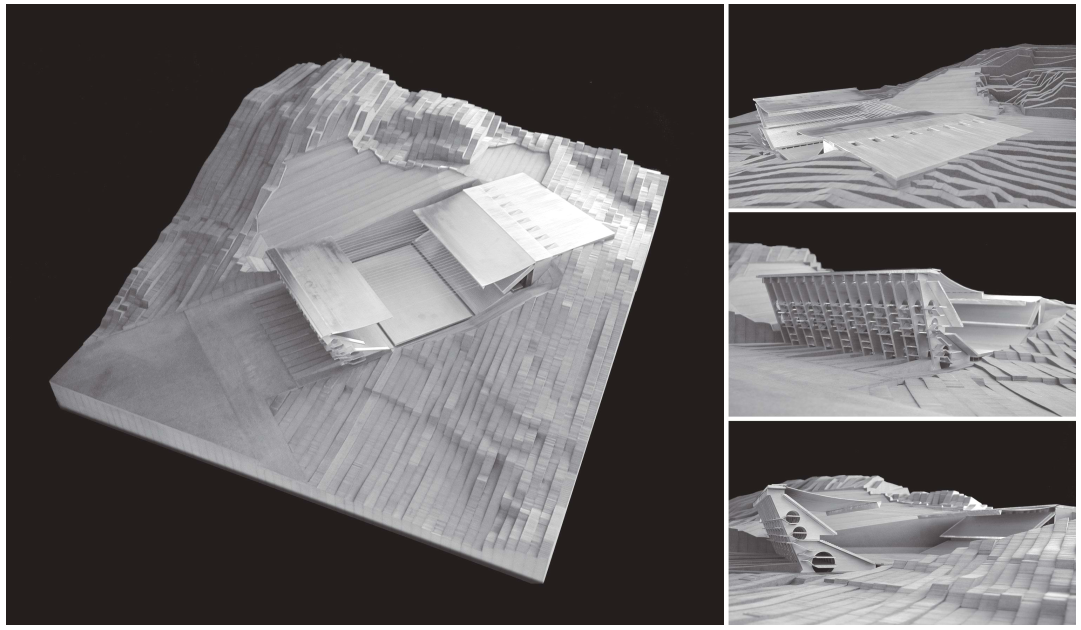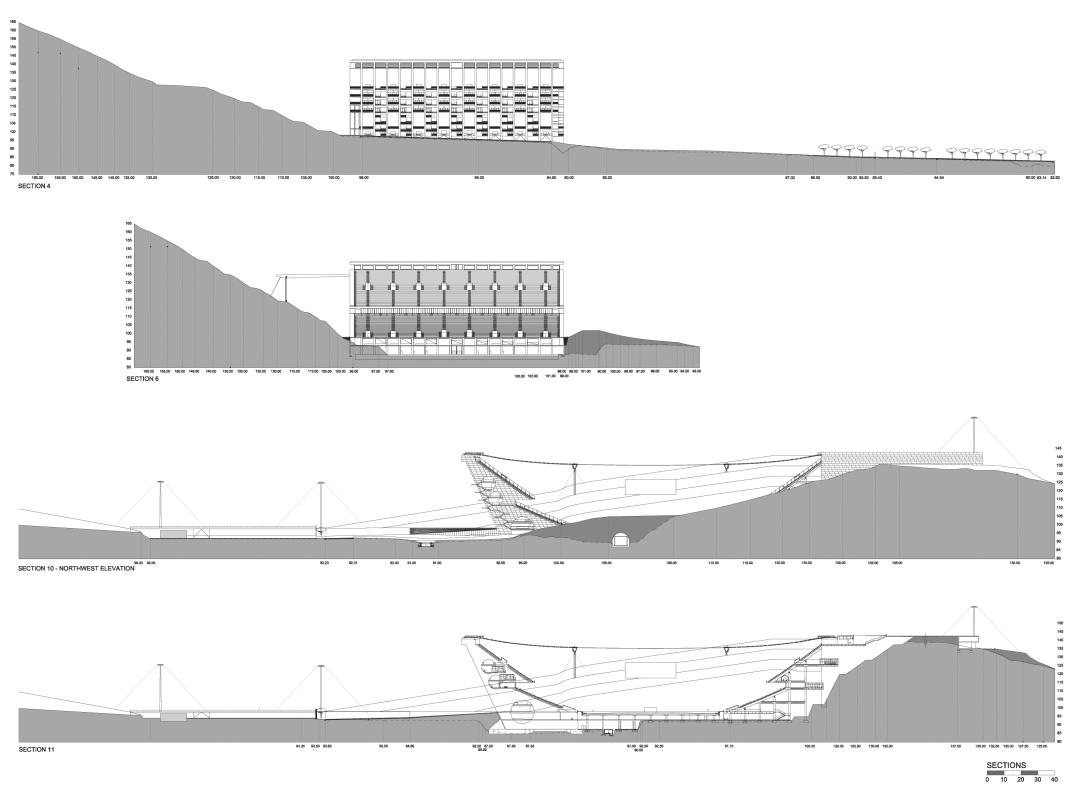Braga Municipal Stadium. Braga, Portugal, 2003
The 30,000-seat Braga Municipal Stadium was designed by the Portuguese architect Eduardo Souto de Moura and completed in 2003. Due to its location in the former Monte Castro quarry it features the nickname ‘The Quarry’ – a sobriquet funnily shared with Antoni Gaudí’s Casa Milà. The project takes advantage of its setting in a remarkable way, with seating stands flanking only the sides of the pitch.
The back of the pitch is open towards the rock face of the quarry, while its front opens on to the wider landscape and overlooks the lower lying city of Braga and the landscape beyond. The L-shaped quarry site entails that one stand is set against the rock face, while the other is free-standing and monumental, and provides the main entry area. Beneath the pitch the stands are connected by way of a 5,000-square-metre plaza.

The model photos of the Braga Municipal Stadium show the relation between the project and the quarry. The quarry delimits the stadium on two sides, on one side as the back of seating ranks and on the other as exposed to the rock face. The opposing seating ranks are free-standing and monumental. On the north side the stadium opens to the landscape. Copyright: Eduoardo Souto de Moura
The design of Braga Municipal Stadium resonates with that of the Leça da Palmeira Swimming Pool by Alvaro Siza (see p. 159) in the way it utilizes adjacent landscape features and opens to the wider landscape, thus embedding the project comfortably into its setting. In the case of the stadium this is done without relinquishing the possibility to emphasize parts of the building as monumental, while de-emphasizing the architectural object as a whole.
The project also resonates with RCR Arquitectes’ Marquee at Les Cols (see p. 99) in the way in which the roof is articulated and how it is aligned on one side of the stadium with the higher terrain level of the quarry and, in so doing, suggests a second yet provisional datum. In this way the stadium seems halfway part of the ground, while on the other hand contrasting it as both a constructed landscape and clearly defined architecture on the opposing side. Open space continues through the stadium from the higher altitude of the quarry through its exposed slope and into the wider landscape. There is never any uncertainty as to where one is located, nor does the stadium become an entirely inaccessible space when there is no match being played.

Various sections of the stadium, showing its relation to the terrain form. Copyright: Eduardo Souto de Moura
At any time its space remains part of the visual continuity of the wider landscape. With this, the question arises how this design approach may be rearticulated to meet dense urban settings or, to turn the question around, how urban settings may be thought of in which such an approach would be momentous. It would not be too challenging to imagine a project like this in the context of landscape urbanism-type settings such as the Turf City scheme (see p. 145) in which the wider landscape is largely constructed and enmeshed with layers of natural systems. In an urban context it would also be conceivable that the large subterranean plaza of the Braga Municipal Stadium is part of a more extensive public space, whether above or below ground, with an alternating sectional location across the urban fabric.
Date added: 2025-08-01; views: 204;
